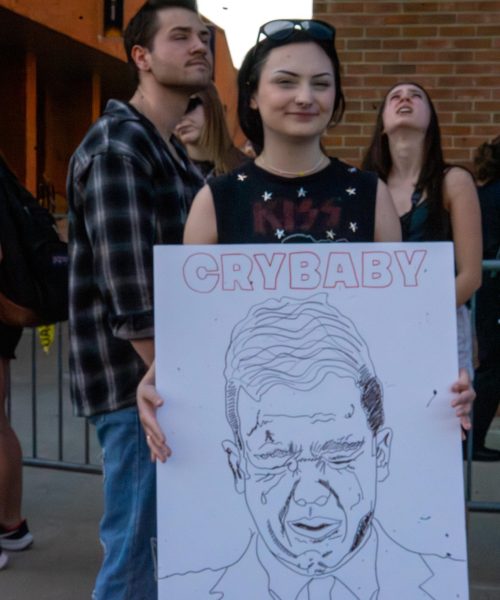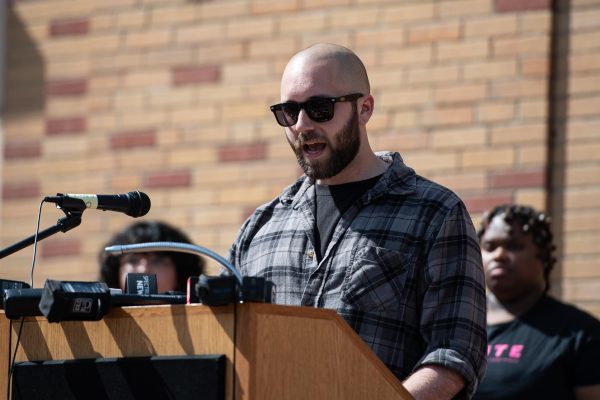‘Our legacy is 90,000 pounds of trash’
April 22, 2010
Whenever William G. Steiner II gives a presentation about recycling, he starts out by putting things into perspective.
“I kind of look at my audience, and if it’s an older group, I ask them for a show of hands and say, ‘How many of you have grandchildren? And what about children? Did you put the amount of trash you’ve left them in your will?’ Our legacy for the next generation is about 90,000 pounds of trash,” he said. “I try to hit them with facts.”
Steiner, the director of Portage County Solid Waste Management in Kent, said the highest point in many Ohio counties is at a landfill.
Recycling isn’t Steiner’s main concern just because today is the 40th anniversary of Earth Day — it’s his passion all year round.
The district recycling center was established in 1989 when Ohio passed a law that required all counties to provide recycling opportunities for residents. Since then, the recycling center has been serving approximately 35,000 Portage County residents through curbside pickup and drop-off centers.
Last year, the center recycled more than 11,700 tons of paper, cardboard, aluminum, glass, plastic and tin.
Nick Dicezni, the center’s production foreman, said the “simple operation” can push through as much as 60 tons per day, which is picked up by 12 trucks.
The plant is a dual stream facility. This means the waste has to be separated into two groups before being placed on the conveyor belt to begin its journey to becoming a recycled good.
The process
One side of the center is piled full of magazines, newspapers and cardboard, which are considered fiber materials. These items have the fastest turnover because of newspapers, which Dicezni said are recycled more than any other material each day.
The other side is packed with container materials, including aluminum, tin, glass and plastic.
Dicezni said the dual stream facility is the reason people are required to separate their recyclables. When materials aren’t separated properly, there are people who have to separate them by hand on the production line.
“There’s a lot of people who don’t care what they throw in the bin,” Dicezni said. “We take that trash, bale it up ourselves and we have to pay to get rid of it.”
Steiner said people used 90 billion aluminum cans last year — 47 billion of which ended up in landfills.
Steiner figured people throw away 81.5 cents every time they send a pound of cans to a landfill.
The end result
Every week the companies that bid on the products are different. Newspaper can become a new newspaper, tin and metal can be melted down, cardboard typically becomes moving or cereal boxes, aluminum cans are melted down and placed on the shelf as a pop or beer can again. Glass is also melted down and remade into a bottle or jar.
The center previously hosted days where residents could drop off hazardous wastes and recycled paints. Steiner said the program had to be canceled because of financial issues.
The center doesn’t receive any money from the county’s general fund and instead relies on service fees and a rural recycling grant from the U.S. Department of Agriculture. Kent residents pay $9.60 along with their trash bill each month for the curbside recycling service.
Steiner said he plans to re-implement the program within the next year and asks anyone who has hazardous materials to keep them in their storage until next year instead of illegally dumping and risking contaminating the city’s groundwater.
The center, located at 3588 Mogadore Road, offers other opportunities to recycle. It shreds papers for companies and also serves as a drop-off location for computers, electronics, car batteries, used oil and antifreeze. Residents can stop by between 7:30 a.m. and 3:30 p.m. to recycle these materials.
The center is currently undergoing a feasibility study to determine if a new building should be constructed. Dicezni, who has been production foreman for 18 years, said the technology is outdated.
He said the center would like to change to curbside pickup only and become a single stream facility. Both he and Steiner said it would make the process more efficient and allow them to recycle more materials and make more money in the process.
“The good thing about recycling is it creates jobs,” Steiner said. “It’s an economic benefit as well as environmental.”
Contact public affairs reporter Melissa Dilley at [email protected].























